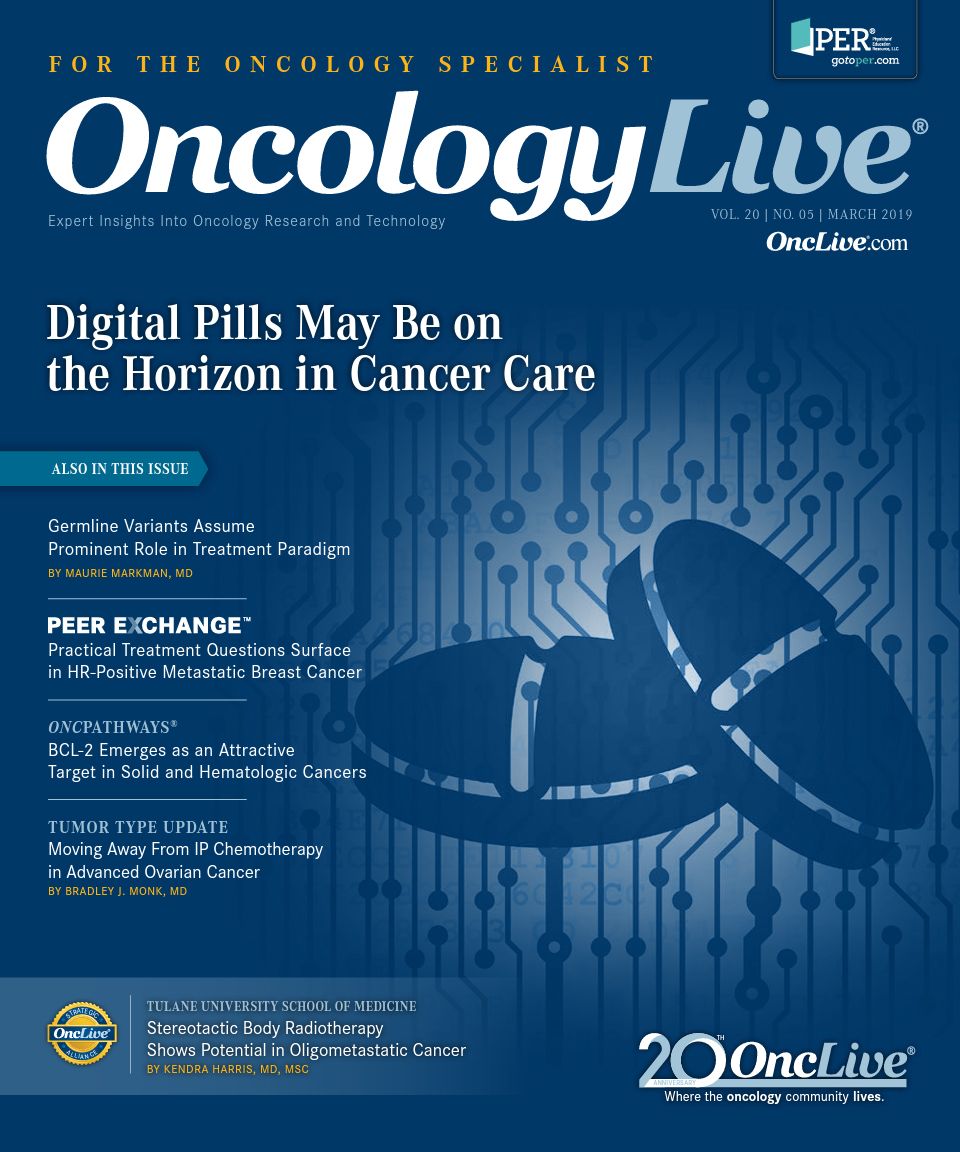Publication
Article
Oncology Live®
Tumor Marker Trial Aims to Ease "Scanxiety" in Breast Cancer
Author(s):
Breast surveillance is essential when determining whether or not therapy is beneficial and to avoid toxicity, usual care for patients with metastatic breast cancer includes monitoring of symptoms and cancer burden.

Melissa K. Accordino, MD, MS
Breast surveillance is essential when determining whether or not therapy is beneficial and to avoid toxicity, usual care for patients with metastatic breast cancer includes monitoring of symptoms and cancer burden. However, there is no established optimal frequency of surveillance with imaging and/or serum tumor marker (STM) testing.
Therefore, patterns of prolonged testing and monitoring do arise and contribute to “scanxiety” among patients, according to Melissa K. Accordino, MD, MS, assistant professor of medicine at the Herbert Irving Comprehensive Cancer Center at Columbia University in New York, New York. Routine tests can turn into daylong affairs, and the anxiety continues into the days following the exam, as a patient waits for test results. Further, providers may not act on the results of such tests.
Accordino and colleagues have initiated a clinical trial to evaluate the effects of a regular schedule of STM testing versus standard-of-care (SOC) imaging with or without STM on overall survival (OS), healthcare costs, and patient-reported outcomes of anxiety and quality of life (QoL). SWOG 1703 (NCT03723928) is enrolling patients with metastatic hormone receptor—positive, HER2-negative breast cancer.
Finding the Optimal Frequency
Investigators hypothesize that STMs may be as reliable for prompting when scans should be ordered as the SOC approach to monitoring disease. “We know that patients are frequently monitored with a combination of imaging with or without tumor markers, and these tests are often done at frequencies that vary from physician to physician,” Accordino said in an interview with OncologyLive®. “We also know that disease monitoring can be very stressful on patients and that there can be related anxiety, as patients are nervous about progression.”SWOG 1703 will randomize patients with elevated tumor marker levels 1:1 to be monitored with STM alone or usual care. Those in the experimental arm will undergo disease STM evaluation (CA 15-3, CA 27.29 and CAE) every 6 weeks without imaging. In the event of an elevated STM, the patient will have imaging within 4 weeks to evaluate for disease progression. Patients randomized to the SOC arm will undergo scans at least every 12 weeks with or without STMs. The frequency of the scans in the SOC arm will be determined by the treating physician. Patients in both arms will continue with the specified disease monitoring for up to 312 weeks in the absence of disease progression and will complete QoL assessments and anxiety questionnaires (Figure).1
The primary objective is to assess whether patients with hormone receptor—positive, HER2negative metastatic breast cancer who are monitored with STM-directed disease monitoring have noninferior OS compared with patients monitored with usual care. A secondary objective is to compare direct healthcare costs between the 2 arms through 48 weeks of monitoring.
Figure. SWOG Trial Compares Surveillance Protocols in Metastatic Breast Cancer1
Changing the Treatment Landscape
The logic of gathering such data is that it makes sense to monitor patients based on an evidencebased platform, Accordino said. “We would never treat a patient with a drug that we don’t have data for. It is important to get these data and monitor patients in a way that makes sense.”Currently, the National Comprehensive Cancer Network (NCCN) guidelines do not have a recommendation for the optimal frequency of monitoring patients with metastatic breast cancer. Frequency of monitoring, the guidelines state, must be balanced with the need to detect progressive disease, avoid unnecessary toxicity, utilize resources effectively, and manage costs of care.2
The NCCN guidelines advise that symptom, physical, and performance assessments take place prior to each cycle of chemotherapy and every 1 to 3 months for endocrine therapy. Computed tomography scans of the chest, abdomen, and pelvis with contrast are recommended every 4 cycles of chemotherapy and every 4 to 6 months of endocrine therapy.
Reducing Anxiety
Recommendations against routine imaging, such as chest radiographs, bone scans, or abdominal ultrasound, to evaluate metastatic disease come from trial results that show no survival benefit in patients without symptoms.3By evaluating the efficacy of routine STM monitoring in patients with metastatic disease, investigators hope to obtain a clearer picture of physician preferences for disease monitoring testing. Accordino noted that this could mean patients may not need imaging tests for several months or even 1 year, which she has noted from her own experience treating patients.
STM data are only as useful as a practitioner makes them, she said. “Sometimes people order tumor marker tests and don’t do anything with the results. They still scan the same amount of time,” Accordino said. “Why are you putting patients through these tests and getting them worked up if you are not going to change anything based on the information?”
In addition to the STM data, the QoL and anxiety analyses will provide valuable supplemental data that will aid in evaluating the risk/benefit ratio of available monitoring options.
References
- Serum Tumor Marker Directed Disease Monitoring in Patients With Hormone Receptor Positive Her2 Negative Metastatic Breast Cancer. clinicaltrials.gov/ct2/show/NCT03723928. Updated December 21, 2018. Accessed February 12, 2019.
- Breast Cancer, version 4.2018. NCCN website. www.nccn.org/professionals/physician_gls/pdf/breast.pdf. Accessed February 12, 2019.
- Lam DL, Houssami N, Lee JM. Imaging surveillance after primary breast cancer treatment. AJR Am J Roentgenol. 2017;208(3):676-686. doi: 10.2214/AJR.16.16300.

























%20(2)%201-Recovered-Recovered-Recovered-Recovered-Recovered-Recovered-Recovered-Recovered-Recovered-Recovered-Recovered-Recovered-Recovered-Recovered-Recovered-Recovered-Recovered.jpg?fit=crop&auto=format)
%20(2)%201-Recovered-Recovered-Recovered-Recovered-Recovered-Recovered-Recovered-Recovered-Recovered-Recovered-Recovered-Recovered-Recovered-Recovered-Recovered-Recovered-Recovered.jpg?fit=crop&auto=format)
